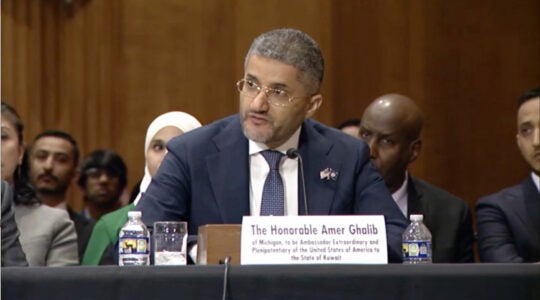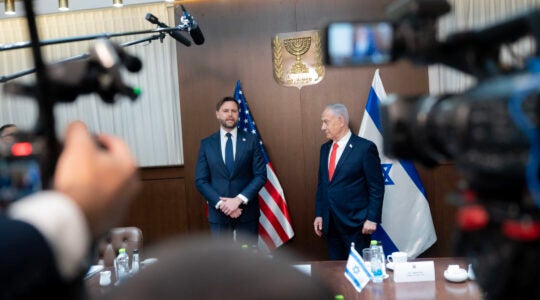
Burlington in summer. Not such a bad setting for the CAJE conference.
I’ll be blogging all week from the annual conference of the Coalition for Advancement of Jewish Education, which this year has drawn some 1,500 Jewish educators from around the world to the University of Vermont at Burlington to talk about best practices and trends in Jewish education.
While CAJE is primarily geared toward professional development for supplementary school and early childhood education professionals, the conference also draws a sizable contingent from the Jewish day school world, primarily because it is the largest conference of its kind.
I’ve been here since late morning on Sunday, and I will have more in a bit about CAJE’s opening plenary and Tisha B’Av programming a little later, but I’m getting a late start because of some technical difficulties. I flew up here yesterday because Dennis Ross was supposed to be the conference’s keynote speaker, but he canceled at the last minute due to illness.
The conference features a heavy dose of environmentalism and Jewish ecology – an effort to figure out how to capture kids’ Jewish imagination by tapping into a common secular interest. Or perhaps vice versa. It’s a fitting setting as UVM is surrounded by a gorgeous landscape of lush green mountains on one side and Lake Chaplain on the other, and almost every restaurant you enter uses eco-friendly corn-made-plasticware, as does the school itself.
Conference organizers even made sure that no meat for the five-day affair came from Agriprocessors, the kosher meat plant in Postville that is under intense scrutiny for alleged immigration and worker-abuse violations. Using meat from a plant that may not be up to ethical par “was just not in the spirit of CAJE,” the organization’s executive director, Jeffrey Lasday told me Sunday afternoon. He said he made the decision not to use Agri shortly after the plant was raided in a large-scale immigration bust in May.
CAJE has enlisted some 20 experts in Jewish ecology and environmentalism to teach 60 classes in the subject between now and the conference end the afternoon of Aug. 14. Each night will feature an eco-friendly dinner discussion.
I’m actually sitting on the floor in a lecture hall listening to Nigel Savage of the eco-friendly Jewish organization Hazon explain why it is we are all here under the Judeo-green mantle (Full disclosure: I had signed on to listen to Jack Wertheimer present his latest findings about supplementary school education, but he pulled a Dennis Ross and canceled on CAJE. So I schlepped all the way across campus to get to the environmental program.)
“We want to shift the axis of what it means to be Jewish in the 21st century so that it necessarily means to be involved in the larger issues that concern us. It necessarily means that we are working to create a healthier and more sustainable Jewish community,” Nigel said. “We are part of an ecosystem and we need to be interacting with one another.”
While early Judaism was gregarious in nature and was based on agriculture and shepherding, and its 40 formative years were spent communing with God in the desert after escaping Egypt, mainstream Judaism largely has lost its connection to the earth, according to Nigel.
“The Jewish people did not arise in a synagogue or a JCC or a day school,” Nigel said, “We arose with a deep connection to the outdoors.”
Despite the schlep to hear Nigel, I am in a pretty good mood. I started the day at 7 A.M. with some Jewish meditation, in lieu of shacharit – or, rather, in lieu of sleeping an extra hour.
The only thing I am concerned about is that I got a little stuck during my morning meditation session with about 30 CAJE-ians.
I relaxed my temples, my jaw, my stomach, readjusting my sit bones and concentrating on my breath, as suggested by our supremely mellow instructor, Karen Frank, a congregational nurse and meditation practitioner from New Jersey.
Then I imagined my spine as a stack of Legos and aligned my vertebrae as she asked. But when she suggested calmly that I picture my head as a ball sitting on top of that stack and I should try to balance that ball, I couldn’t get my head on straight.
See my yogi below.
JTA has documented Jewish history in real-time for over a century. Keep our journalism strong by joining us in supporting independent, award-winning reporting.





